As synthetic chemistry has evolved, so has flash chromatography. Target molecule synthesis is becoming more complicated and the synthetic products more polar. This shift in compound polarity has changed purification strategy from almost entirely normal-phase flash chromatography using silica to a significant percentage of flash chromatography now being reversed-phase during the past 9 or so years.
At Biotage we have seen this play out in our flash column sales. Over the period from 2012-2019 the flash column product ratio changed from 10% reversed-phase to 23% reversed-phase. In 2020, the percentage of reversed-phase has increased to 37%!
During this time our customers have asked for advice on creating reversed-phase methods. Since the inception of this blog in 2015, I have written on this topic several times. There are two suitable avenues to pursue here. One is using a small reversed-phase flash column to scout different methods (solvents/gradients/modifiers) on your flash system. The other is using your HPLC system and a C18 column to develop your method.
The first option is faster and provides data for your sample on that column but consumes more solvent and sample than a HPLC column. The second option can take longer, depending on column size/flow rate, and uses less solvent and sample, but may not provide the same selectivity/resolution as your flash column due to bonded phase chemistry and/or chromatography system volume differences, both which can dramatically influence your reversed-phase flash results. Figure 1 shows the selectivity issues of using a generic HPLC column for flash method development.
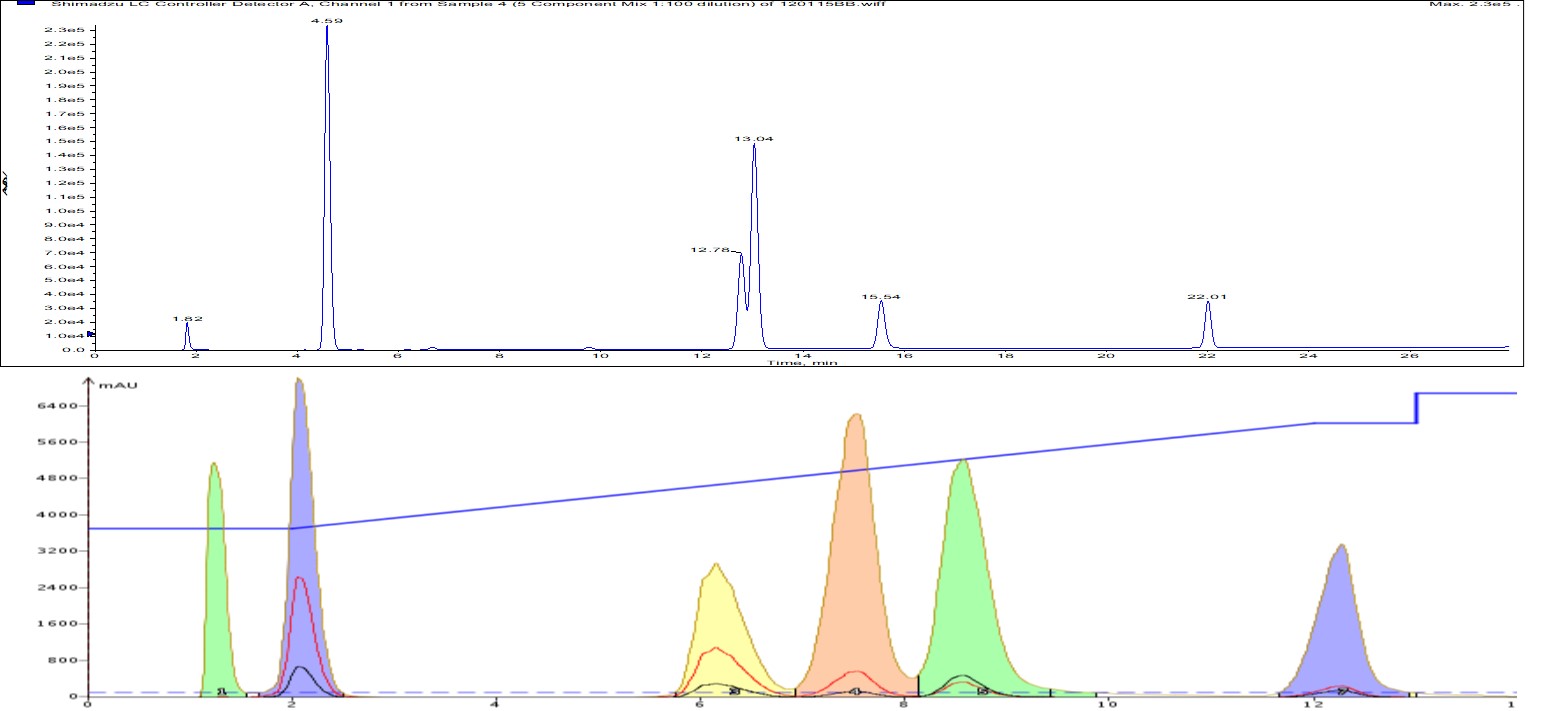
Figure 1. Chromatographic results from unmatched reversed-phase HPLC column media using same sample and gradient method shows major selectivity differences, especially with the three middle compounds. Top - commercially available HPLC column. Bottom - 12-gram Biotage® Sfar C18 column.
So, how then can you develop a directly transferrable HPLC method suitable for flash chromatography? The best way to do this is to use an HPLC column packed with exactly the same media as your reversed-phase flash column. Though not readily available through other vendors, Biotage has for over 20 years manufactured HPLC columns packed with flash chromatography media. By using one of these “scaling” columns, the sample compounds’ elution order and selectivity will be consistent with what will be generated by the Biotage reversed-phase flash column when using the same solvents and gradient method.
Seems logical and straightforward, and it is. The key is to create your HPLC methods in column volumes (on paper) then convert to time. This is quite easy as all you need to start is a basic gradient template and the HPLC (scaling) column’s column volume (CV) to start.
My basic template is a 3-segment linear gradient:
-Segment 1 - initial starting conditions for 1 CV (can be anything but should be based on sample solubility)
-Segment 2 - initial conditions to final conditions over 10 CV
-Segment 3 - hold final conditions for 2 CV
You can determine the HPLC column’s CV by looking at the chromatogram enclosed with the packaging. The first eluting compound is the most polar and typically elutes at ~1 CV, but will be displayed in minutes, Figure 2.
To convert time to volume, multiply the first peak’s elution time by the flow rate. My 4.6 x 250 mm Biotage scaling column’s test chromatogram was run at 2 mL/min with the unretained peak eluting at 1.32 min. This translates to a CV of 2.64 mL.
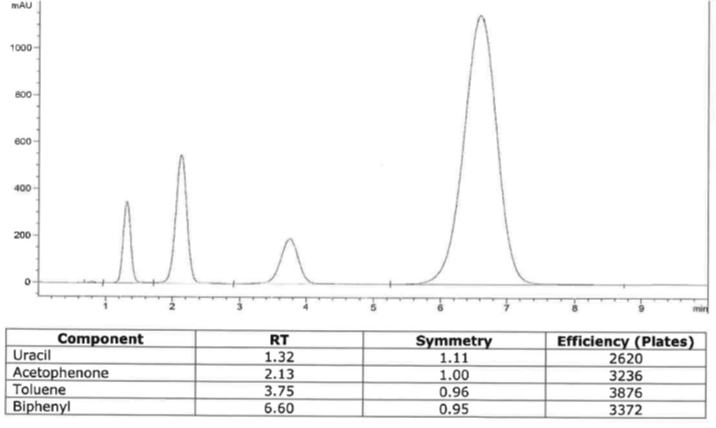
Figure 2. Biotage® 4.6 x 250 mm C18 scaling column test chromatogram shows unretained uracil eluting at 1.32 minutes at a flow rate of 2 mL/min giving a column volume of 2.64 min.
Using this information and my basic gradient template, I created a method for a 7-component mixture of medium to low polarity compounds starting at 40% methanol and ending at 100% methanol.
HPLC method at 1 mL/min
-Segment 1 - 40% methanol for 2.64 minutes (1 CV)
-Segment 2 - 40% to 100% methanol over 26.40 minutes (10 CV)
-Segment 3 - 100% methanol for 5.28 minutes (2 CV)
This method created a full separation of all seven components, Figure 3.
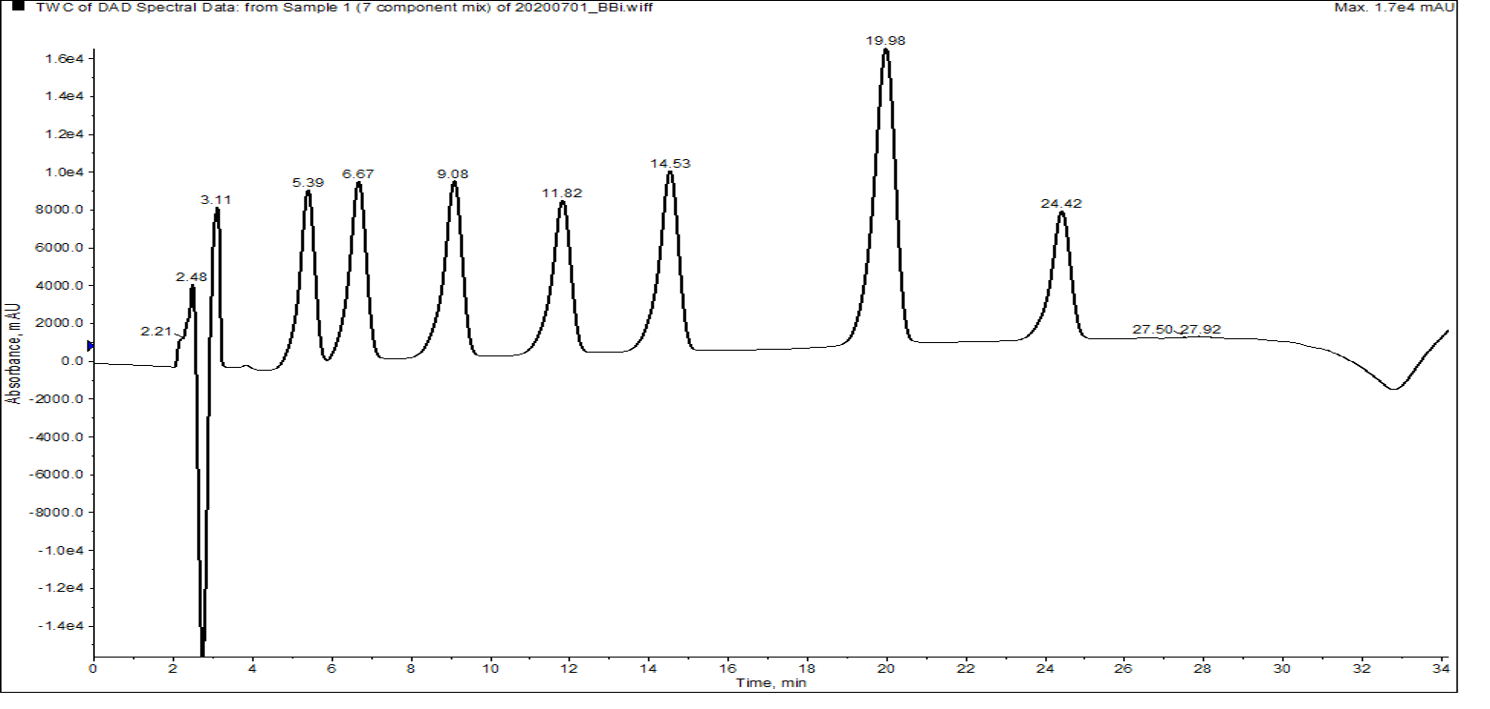
Figure 3. Scaling column separation of the 7-component sample using the 40-100% methanol gradient at 1 mL/min. The positive-negative inflection is the void time (~2.64 min).
Transferring this method to a 12-gram Biotage® Sfär C18 column (same C18 media) on my flash system created a very similar separation but with longer retention and lower resolution, Figure 4.
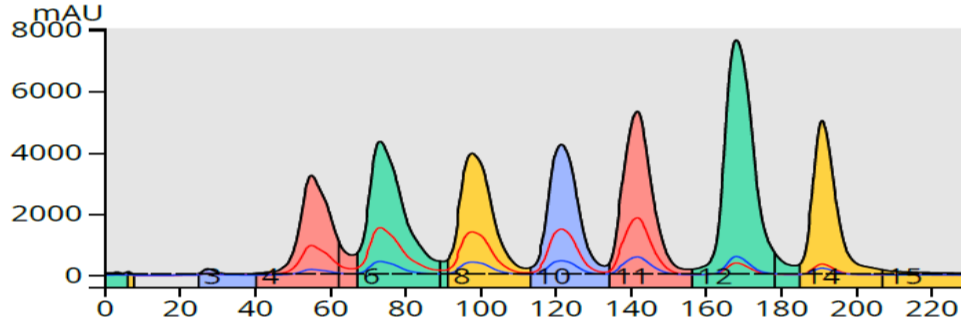
Figure 4. Flash purification for the 7-component mix (35 mg load) using the same gradient at 30 mL/min generates results very similar to those of the scaling column.
The reasons they are not identical have to do with differences in each system’s internal volume between the pump/gradient mixer and the column (dwell volume) as well as sample load (35 mg on the flash column, micrograms on the HPLC column).
HPLC systems typically have very small dwell volumes (~1 mL) while flash systems have larger volumes of several mL (due to much larger tubing ID for faster flow rates). This larger volume increases the time needed to get the gradient to the column, delaying compound elution while the larger load broadens the peaks.
While the flash column's stated CV is 17 mL, an unretained peak (acetone, used as the sample solvent), elutes at 27.5 mL - a 10.5 mL delay. That delay plays a role during the gradient impacting the elution time/volume of each peak but does not greatly impact selectivity or retention factor/capacity factor (k'), Table 1.
Table 1. Retention (k') and selectivity (α) comparison between a flash and HPLC column packed with the same media and operating with the same gradient.
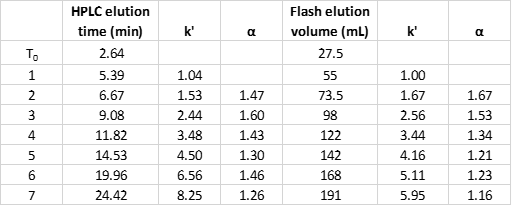
The data shows that there is generally good agreement between the columns in terms of retention factor and selectivity.
The important take-away here is that if you want to use HPLC for flash method development, use a HPLC column packed with the same media as your flash column and a column volume-based method. Doing this provides directly transferrable flash chromatographic scale-up purification of a sample without altered selectivity.
For more information on flash chromatography, please download our whitepaper Successful Flash Chromatography.

 Organic Workflow
Organic Workflow Peptide Workflow
Peptide Workflow Scale-Up Flash Purification
Scale-Up Flash Purification  Sample Preparation
Sample Preparation Biomolecule Purification
Biomolecule Purification Oligo synthesis
Oligo synthesis Scavengers and Reagents
Scavengers and Reagents Service & Support
Service & Support Accessories & Spare parts
Accessories & Spare parts Investors
Investors Reports & News
Reports & News The Share
The Share Corporate Governance
Corporate Governance Calendar
Calendar Sustainability
Sustainability Our Offering
Our Offering Our History
Our History Our Locations
Our Locations Leadership
Leadership